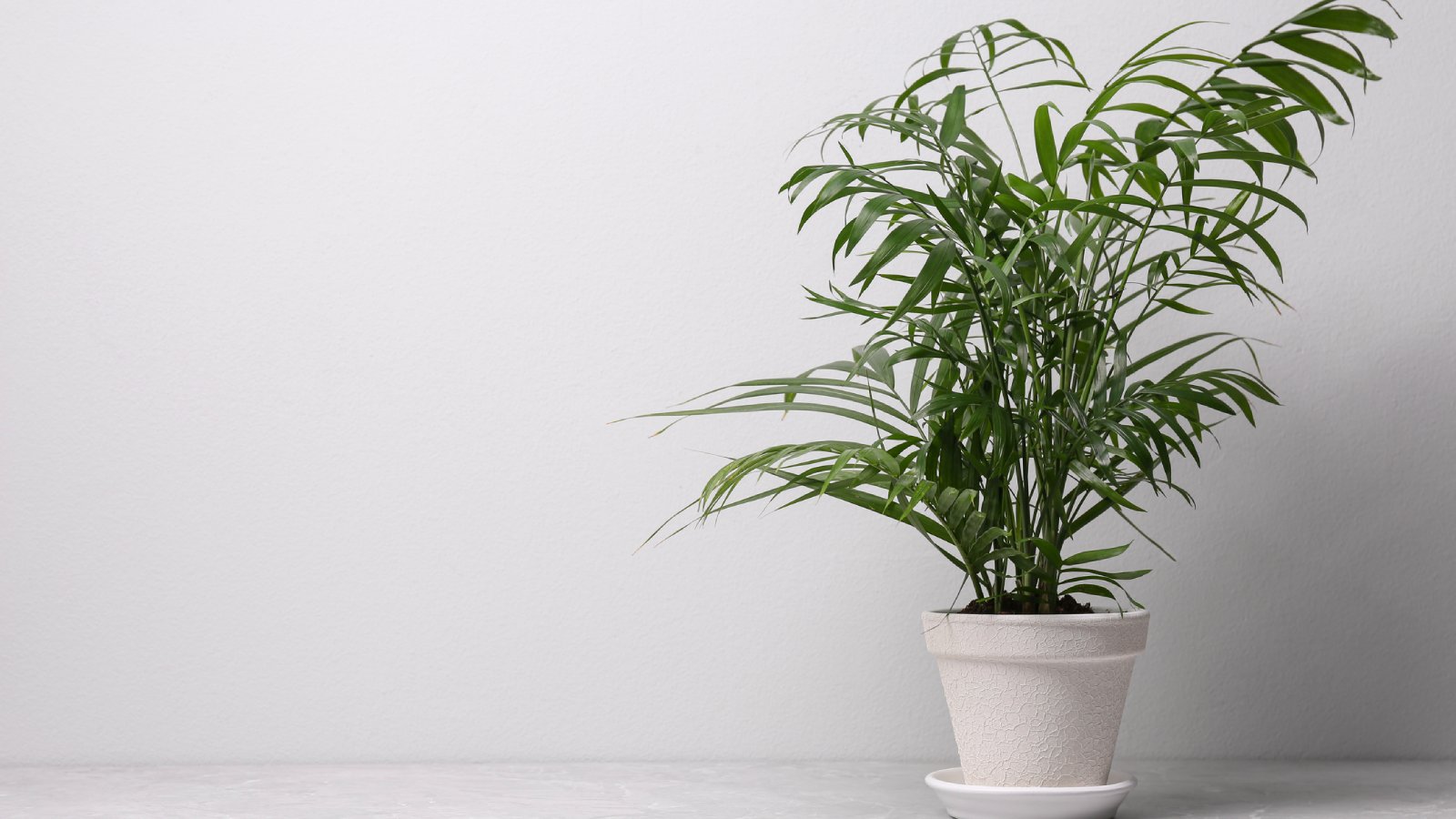Caring For A Majesty Palm: Expert Guide To Ravenea Rivularis
If you live in a warm climate, caring for a majesty palm outdoors is easy. If your region is cooler, this palm makes a gorgeous houseplant.


Quick Majesty Palm Facts
Botanical name: Ravenea rivularis
Height: 5-80 feet (1.5-24 m)
Spread: 5-12 feet (1.5-3.7 m)
Sun exposure: Bright, direct sunlight to full sun
Soil requirements: Moist, well-drained
Hardiness zones: 10 and 11
When to plant: Spring to early summer
Caring for a majesty palm in your garden is easy if you reside in USDA zones 10 and 11. Native only to the island of Madagascar, in many regions this palm has become a popular houseplant. It makes a lovely indoor plant, with graceful, arching fronds and a tropical feel. Grown indoors, a majesty palm will remain a reasonable size. When grown outside, it can reach truly majestic heights.
If you have the proper climate for them, Ravenea rivularis care outdoors is easiest. But growing palms indoors is always a bit more complicated. Majesty palms prefer warmth and humidity, which isn’t always easy to provide inside a home.
How to Care for a Majesty Palm
In the right climate, majesty palms thrive outdoors in warm, humid conditions and moist soil that drains well. Ravenea rivularis care when grown indoors is more crucial:
Lighting Conditions
Majesty palms look best in light that is bright but indirect or filtered. Too much direct, full sun will scorch the leaves and cause the tips to turn yellow and brown.
Temperature & Humidity
A potted majesty palm will not tolerate cold temperatures or dry conditions. The ideal indoor temperatures are between 65 and 85 degrees F (18 and 29 C). Humidity should be at least 50%. Use a pebble tray if your indoor air is dry and keep the palm away from cold drafts.
Watering Needs
The soil for your palm should drain very well but remain consistently moist. Too much water can cause root rot, but this palm will not tolerate soil that dries out completely. Soak the soil when the top couple of inches (5 cm) have dried.
Fertilizing
Caring for a majesty palm requires providing adequate nutrients. Use a balanced liquid fertilizer every few weeks during the growing season only.
Gardening tips, videos, info and more delivered right to your inbox!
Sign up for the Gardening Know How newsletter today and receive a free copy of our e-book "How to Grow Delicious Tomatoes".
Soil & Compost
Use a good quality potting mix for your majesty palm. You can also add compost to enrich the soil.
When and How to Plant Majesty Palms
You can plant or repot a majesty palm indoors any time of year, although the start of the growing season is always best. If you have the right climate, majesty palm tree planting outdoors is recommended in spring or early summer - this gives them a chance to grow healthy roots before winter.
Majesty Palm Trimming & Pruning
Unless you have a yellowing majesty palm plant, you don't need to worry much about pruning. Only remove dead or yellowing leaves or only the tips that have become scorched.
Majesty Palm Problems, Pests & Diseases
There are no serious diseases or pests of majesty palm, but keep an eye out for minor pests like spider mites, mealybugs, and scale. Root rot can become an issue with overwatering or using soil that doesn’t drain well.
How to Propagate Majesty Palms
The best way to grow a majesty palm from a potted plant is by division. You’ll have to remove the palm from its container and look for pups (offshoots) that you can easily divide from the main root ball. Use a sharp, clean knife to remove a pup. Place it in soil in a new container and provide water, fertilizer, and light as it grows into a new palm.
Frequently Asked Questions
Is Majesty Palm Toxic to Cats?
Majesty palm is not toxic to cats or dogs.
Do Majesty Palms Need to be Repotted?
Repot majesty palms every couple of years so their roots do not get overcrowded. Each time, move up to a container that is about two inches (5 cm) larger.
Should You Mist a Majesty Palm?
Majesty palms need a lot of humidity, but misting isn’t the best way to provide it. A better solution is to set the container on a pebble tray filled with water.

Mary Ellen Ellis has been gardening for over 20 years. With degrees in Chemistry and Biology, Mary Ellen's specialties are flowers, native plants, and herbs.